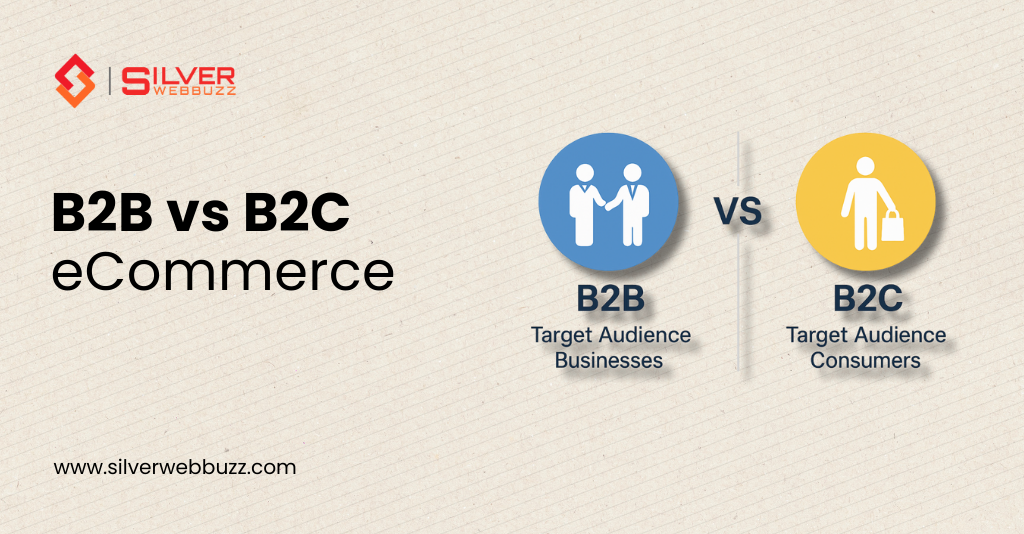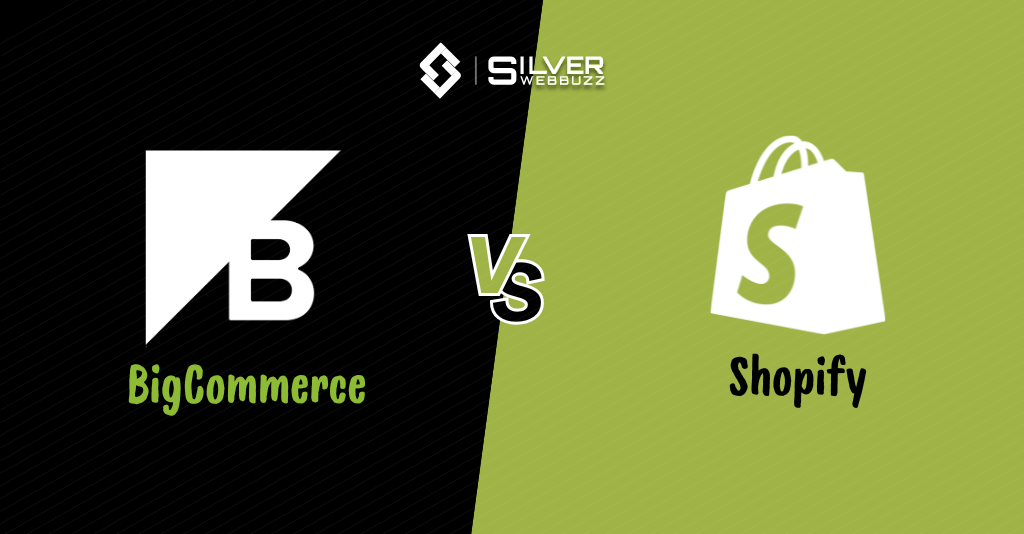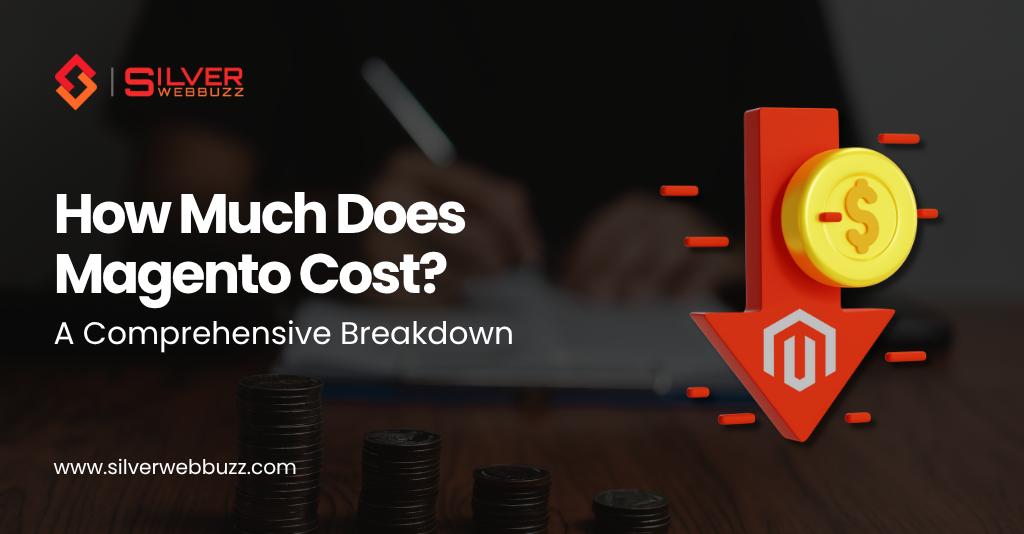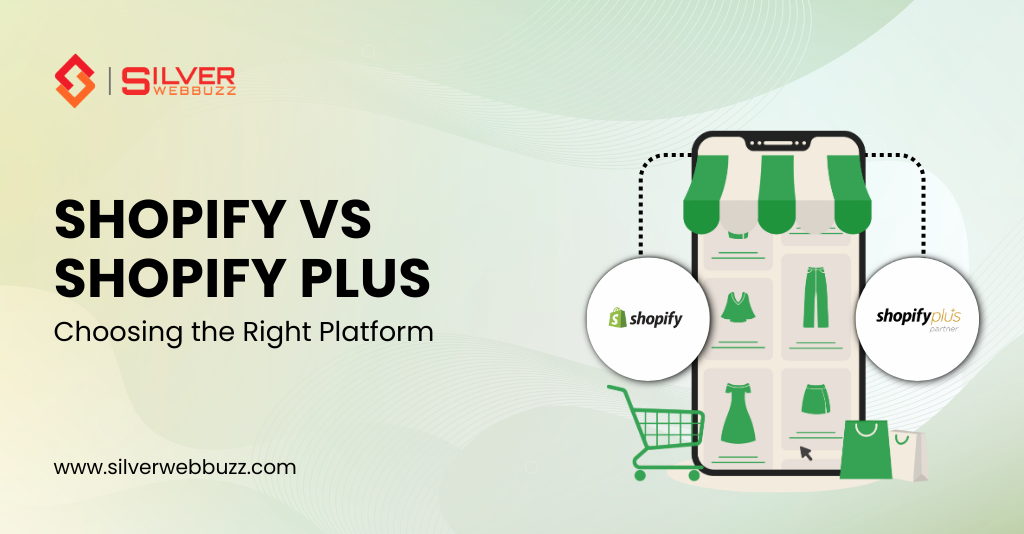Choosing between B2B and B2C eCommerce is often confusing, especially when both models drive global digital trade in different ways. According to Statista, B2B eCommerce sales are projected to reach over $20 trillion globally by 2027, while B2C continues to dominate consumer-driven markets. This guide gives you a clear breakdown of what B2B vs B2C means, how they differ, and why it matters for your business in 2025.
- B2B eCommerce: Business-to-business transactions; larger order volumes, longer decision cycles, customized pricing.
- B2C eCommerce: Business-to-consumer transactions; faster purchases, standardized pricing, focused on customer experience.
- Key Difference: B2B prioritizes efficiency and relationships, while B2C emphasizes speed and personalization.
B2B eCommerce definition: Business-to-Business (B2B) eCommerce refers to online transactions where one business sells products or services directly to another company. This model often involves bulk orders, negotiated pricing, and long-term contracts.
B2C eCommerce: Business-to-Consumer (B2C) eCommerce involves companies selling directly to individual customers through online platforms. It focuses on speed, convenience, and personalized experiences for end-users.
What is B2B vs B2C? Put, B2B eCommerce centers on efficiency and long-term business relationships, while B2C eCommerce emphasizes user-friendly shopping experiences for everyday consumers. Both are critical in the digital economy, but operate with very different priorities.
Key Differences Between B2B and B2C eCommerce
When comparing B2B vs B2C eCommerce, the core difference lies in who the buyer is and how transactions are managed.
- B2B eCommerce: Transactions occur between businesses, often involving bulk purchasing, contracts, and multiple decision-makers.
- B2C eCommerce: Transactions happen between businesses and individual customers, typically smaller orders, faster checkout, and direct marketing.
eCommerce Models Comparison
| Factor | B2B eCommerce | B2C eCommerce |
|---|---|---|
| Buyer Type | Companies and organizations | Individual consumers |
| Order Volume | Large, bulk purchases | Small, single-item or few products |
| Purchase Decision | Involves multiple stakeholders | Individual, quick decisions |
| Pricing | Negotiated, tiered, contract-based | Fixed, standardized |
| Relationship Focus | Long-term partnerships | Short-term transactions |
B2B vs B2C explained: B2B emphasizes cost-efficiency, reliability, and tailored solutions, while B2C thrives on convenience, speed, and engaging user experience.
Business Models and Target Audiences
The B2B business model is structured around selling products or services to other companies. These customers are typically wholesalers, distributors, or enterprises that rely on long-term supply partnerships. The goal is efficiency, scalability, and maintaining reliable relationships
In contrast, the B2C business model focuses on reaching individual consumers directly. Here, the audience is broad and diverse, with an emphasis on emotional appeal, brand loyalty, and seamless online shopping experiences.
B2B vs B2C Customers
- B2B Customers: Value consistency, bulk pricing, contract flexibility, and service reliability.
- B2C Customers: Expect competitive prices, personalized offers, fast delivery, and easy returns.
Ultimately, B2B targets a niche, specific group of decision-makers, while B2C serves a wide consumer base with varied needs.
Buying Journey and Decision-Making Process
The B2B buyer journey is typically long and involves multiple steps such as product research, vendor comparison, contract negotiation, and internal approvals. Decisions are made by teams or committees, focusing on long-term value, compliance, and cost-efficiency.
On the other hand, the B2C customer journey is much shorter. Consumers often make purchase decisions individually, driven by emotions, reviews, promotions, or instant needs. The process is usually completed within minutes or hours, especially for low-cost items.
Purchase Process in eCommerce
- B2B eCommerce: Multi-step approvals, repeat orders, emphasis on ROI.
- B2C eCommerce: Quick decision-making, impulse buying, seamless checkout.
In short, B2B prioritizes rational decision-making and relationship building, while B2C focuses on convenience and instant gratification.
Pricing Strategies in B2B vs B2C eCommerce
Pricing in eCommerce can make or break profitability—especially when selling to businesses versus consumers. After reviewing McKinsey data and leading eCommerce case studies, we know pricing structures must adapt to order size, buyer expectations, and negotiation power. Here’s a clear breakdown of how B2B and B2C pricing strategies differ so you can choose the right approach.
- B2B Pricing: Negotiated, tiered, and volume-based to reward large or long-term orders.
- B2C Pricing: Fixed, transparent, and standardized to drive fast individual purchases.
Pricing Strategies Compared
| Feature | B2B eCommerce Pricing | B2C eCommerce Pricing |
|---|---|---|
| Pricing Model | Negotiated contracts, volume-based tiers | Fixed, uniform pricing for all |
| Discounts | Bulk discounts, loyalty-based pricing | Seasonal or promotional discounts |
| Payment Terms | Credit terms, invoicing, net payments | Instant payment at checkout |
| Customization | Personalized quotes per customer/account | Rarely personalized pricing |
| Technology Use | Dynamic pricing engines & ERP integration | Standard pricing tools in CMS |
Key Takeaway: B2B focuses on relationship-building and flexibility; B2C focuses on simplicity and conversion.
B2B eCommerce pricing prioritizes long-term contracts and flexibility to strengthen business relationships, while B2C pricing emphasizes speed, consistency, and clarity to convert individual shoppers quickly.
Technology and Platform Requirements
Choosing the right technology stack is one of the biggest challenges in eCommerce—especially when deciding between B2B and B2C platforms. Research by Forrester shows that B2B buyers expect self-service tools and seamless integrations, while B2C buyers prioritize speed and intuitive interfaces. Below is a clear comparison of the technology and platform requirements for each model to help you invest wisely.
- B2B Platforms: Built for scalability, account-level pricing, and integration with ERP/CRM systems.
- B2C Platforms: Optimized for user-friendly design, fast checkouts, and high-volume traffic.
- Key Takeaway: B2B technology focuses on complexity and integrations; B2C technology focuses on simplicity and speed.
Technology & Platform Comparison
| Feature/Requirement | B2B eCommerce Platforms | B2C eCommerce Platforms |
|---|---|---|
| Core Focus | Handling bulk orders, account management, B2B workflows | High-volume sales, UX optimization, fast checkout |
| Integration | Deep ERP, CRM, and procurement system integrations | Social media, marketing automation, analytics |
| Customization | Custom catalogues, personalized pricing, role-based access | Theme-based design, plug-and-play apps |
| Scalability | Supports multiple buyer roles and regional catalogs | Handles large numbers of consumer visitors |
| Payment & Invoicing | Credit terms, PO support, multiple payment workflows | Instant online payments, fewer payment methods |
| Examples | Magento Commerce (Adobe), BigCommerce B2B Edition | Shopify, WooCommerce, Wix eCommerce |
B2B eCommerce platforms must accommodate complex buyer journeys, contract-based pricing, and enterprise integrations, whereas B2C platforms emphasize speed, mobile responsiveness, and frictionless checkout to satisfy individual consumers.
Marketing Approaches for B2B vs B2C eCommerce
Marketing for eCommerce isn’t one-size-fits-all—what works for consumers may fail for business buyers. Data from HubSpot shows that 79% of B2B marketers prioritize educational content and lead nurturing, while B2C marketers focus on emotional triggers and social engagement. Below is a clear, data-backed comparison of B2B and B2C marketing approaches so you can allocate your budget more effectively.
- B2B Marketing: Content-driven, relationship-focused, using email, LinkedIn, and account-based campaigns.
- B2C Marketing: Emotion-driven, mass-targeted, using social media, influencers, and retargeting ads.
Key Takeaway: B2B marketing nurtures long-term leads; B2C marketing drives quick impulse purchases.
Marketing Approaches Compared
| Feature/Approach | B2B eCommerce Marketing | B2C eCommerce Marketing |
|---|---|---|
| Main Goal | Lead generation, nurturing, and conversion | Immediate sales, brand loyalty, repeat buys |
| Messaging Style | Logical, data-backed, ROI-focused | Emotional, aspirational, lifestyle-oriented |
| Channels | LinkedIn, email marketing, webinars, whitepapers | Instagram, Facebook, TikTok, influencer ads |
| Content Type | Case studies, demos, blogs, industry reports | Short videos, product reviews, viral content |
| Sales Cycle Length | Longer, multiple touchpoints | Short, few touchpoints |
| Measurement Metrics | Lead quality, pipeline contribution | Conversions, click-through rates, AOV |
B2B marketing prioritizes trust-building, data-driven decision-making, and nurturing complex purchase cycles, while B2C marketing focuses on emotional appeal, quick actions, and mass reach across consumer channels.
Customer Experience and Personalization
The B2B customer experience focuses on efficiency, consistency, and tailored solutions for each business account. Buyers expect account-specific catalogs, negotiated pricing, and dedicated support teams. Personalization is achieved through integration with CRM systems, role-based dashboards, and order histories to streamline repeat purchases.
On the other hand, the B2C customer experience emphasizes ease of use, speed, and emotional engagement. Consumers expect visually appealing interfaces, personalized recommendations, quick delivery options, and real-time support like chatbots. Personalization is often driven by AI-powered suggestions, behavioral data, and loyalty programs.
User Experience in eCommerce
- B2B eCommerce: Account-based portals, detailed product specs, custom pricing, bulk order tools.
- B2C eCommerce: Fast-loading pages, AI recommendations, one-click checkout, mobile-optimized design.
In short, B2B prioritizes efficiency, reliability, and tailored solutions, while B2C focuses on delight, convenience, and personalization at scale.
Payment and Order Management Differences
The B2B payment process is designed for larger, recurring, and more complex transactions. Businesses often use purchase orders, extended credit terms, bulk invoicing, and multiple payment approvals. Order management typically integrates with ERP systems to handle large quantities, backorders, and scheduled deliveries.
In contrast, the B2C payment process is faster and simplified for individual consumers. Payments are usually completed instantly via credit/debit cards, digital wallets, or buy-now-pay-later options. Order management focuses on fast fulfillment, returns, and real-time order tracking to enhance customer satisfaction.
Key Elements in eCommerce
- B2B eCommerce: Invoicing, credit terms, PO-based ordering, bulk shipment management.
- B2C eCommerce: Instant online payments, one-click checkout, simple returns process.
In short, B2B emphasizes flexibility, invoicing, and integration with back-office systems, while B2C prioritizes speed, convenience, and seamless order tracking.
Challenges in B2B vs B2C eCommerce
The B2B eCommerce sector faces challenges such as complex product catalogs, integrating multiple systems (ERP, CRM, inventory), and managing negotiated pricing for different accounts. It also requires handling longer sales cycles, bulk orders, and strict compliance standards. Scaling personalization while maintaining data security and accurate logistics adds further complexity.
In contrast, the B2C eCommerce sector struggles with high competition, price sensitivity, and the need for fast fulfillment. Businesses must manage high traffic volumes, frequent returns, and evolving customer expectations for instant support. Maintaining customer loyalty in a crowded market is a constant challenge.
Key Issues in eCommerce
- B2B eCommerce: System integrations, long sales cycles, bulk order logistics, compliance requirements.
- B2C eCommerce: High competition, cart abandonment, fast delivery demands, and customer retention.
In short, B2B challenges center on operational complexity and relationship management, while B2C challenges focus on customer acquisition, retention, and rapid fulfillment.
Future Trends in B2B and B2C eCommerce
The future of B2B eCommerce is moving toward advanced automation, AI-driven personalization, and self-service portals that replicate consumer-like experiences for business buyers. Companies are increasingly adopting headless commerce, dynamic pricing engines, and integrated supply-chain visibility to improve efficiency. Sustainability and data-driven decision-making will also shape procurement processes.
On the other hand, the future of B2C eCommerce will focus on immersive shopping experiences through AR/VR, hyper-personalized product recommendations, and faster last-mile delivery. Social commerce, influencer-driven shopping, and AI chatbots for 24/7 support will become standard expectations for consumers.
Emerging Trends in eCommerce
- B2B eCommerce: AI personalization, headless commerce, seamless ERP integration, sustainable supply chains.
- B2C eCommerce: AR/VR shopping, same-day delivery, social commerce, AI-powered support.
In short, B2B will evolve toward intelligent, integrated platforms that mimic B2C ease of use, while B2C will push boundaries of personalization, speed, and immersive experiences.
Partnering With an eCommerce Development Company
Choosing the right eCommerce development partner is crucial for both B2B and B2C businesses. Experienced developers can implement tailored platforms, integrate critical systems, and optimize the user experience to meet specific business goals. According to Deloitte, companies that invest in expert eCommerce development see faster time-to-market and higher customer satisfaction.
Benefits of Partnering with Experts
- B2B Focus: Custom workflows, ERP/CRM integration, scalable account management, personalized pricing engines.
- B2C Focus: Mobile-first design, fast checkout, AI recommendations, seamless payment gateways.
- Shared Advantage: Faster deployment, reduced errors, ongoing support, and future-proof solutions.
In short, partnering with a skilled ecommerce Development Services provider ensures your platform is optimized for your business model, whether B2B or B2C, while improving efficiency, scalability, and customer satisfaction.
Conclusion: Choosing the Right Model for Your Business
Selecting the right eCommerce model—B2B or B2C—directly impacts growth, customer satisfaction, and profitability. B2B eCommerce excels in long-term relationships, complex transactions, and personalized solutions, while B2C thrives on speed, convenience, and mass appeal.
For businesses serving other companies, investing in scalable B2B platforms, dynamic pricing, and account-based marketing is key. For consumer-focused businesses, prioritizing fast checkout, engaging content, and personalized experiences will drive conversions.
In short, understanding your target audience, purchase behavior, and business goals ensures you choose the model that maximizes efficiency, sales, and customer loyalty in 2025.




